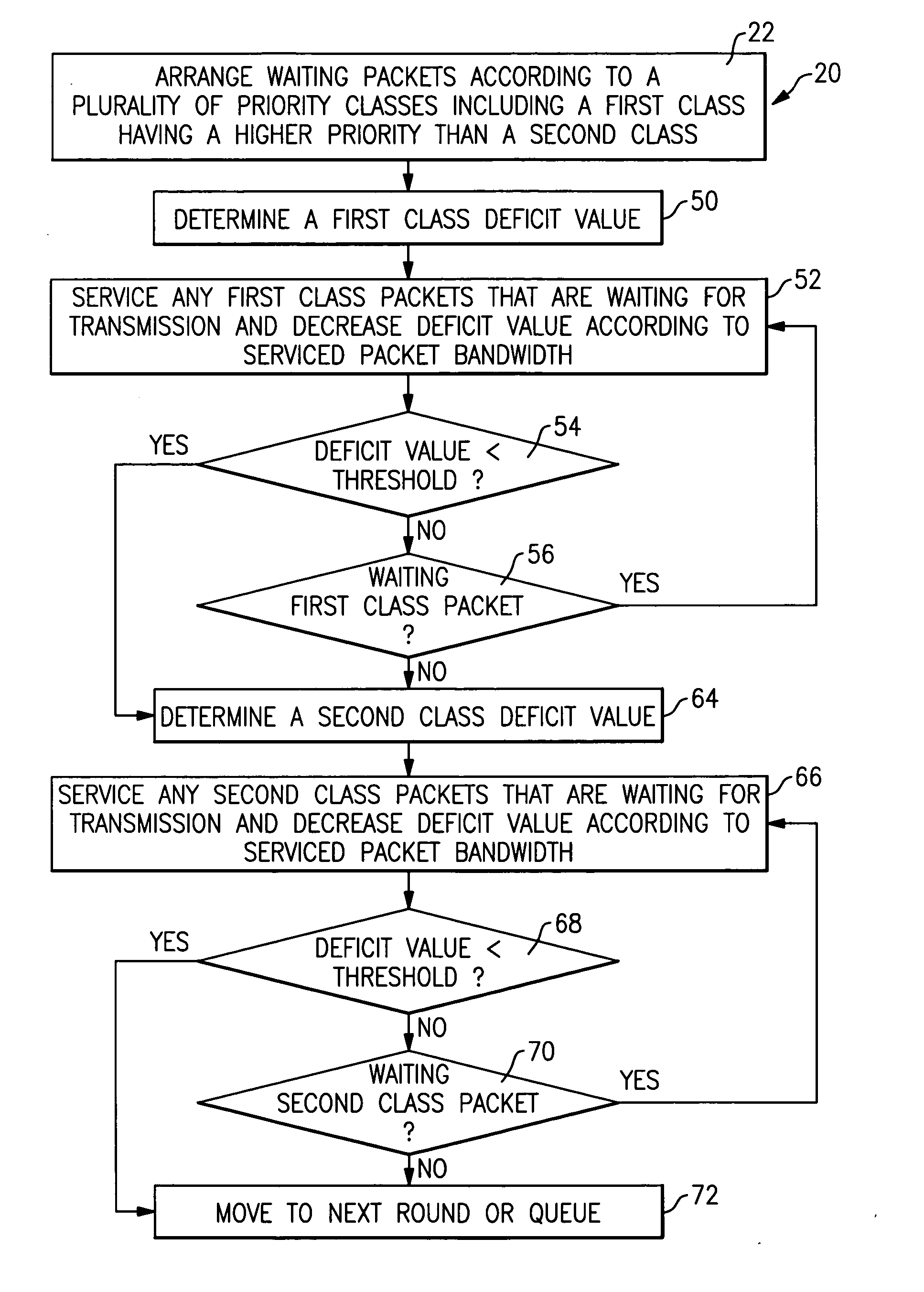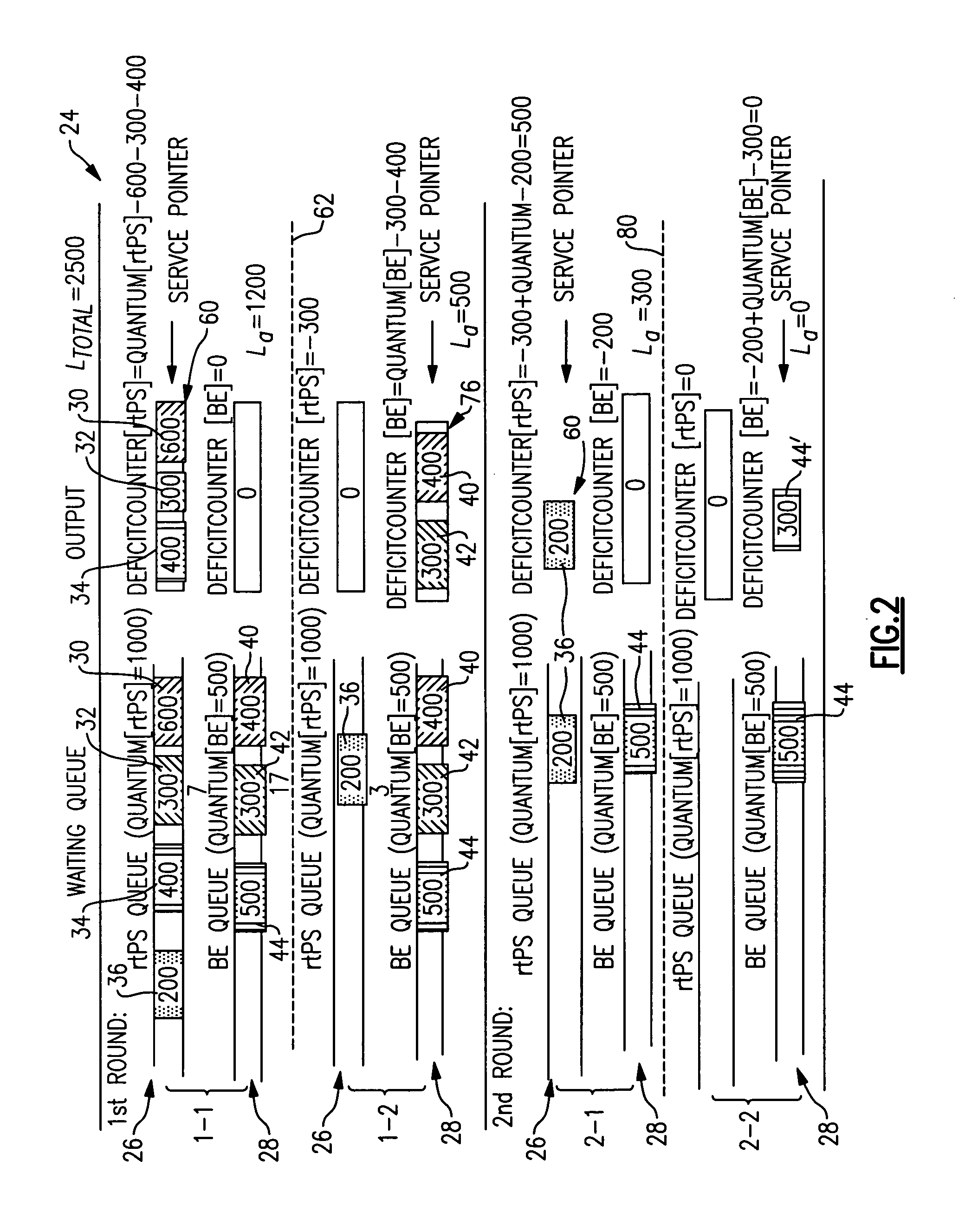Deficit fair priority queuing
a priority and queuing technology, applied in the field of communication, can solve the problems of inability to guarantee the quality of service for higher priority packets, the obvious limitations of such a queuing technique, and the inability to prioritize packets for a long time. the effect of fairness
- Summary
- Abstract
- Description
- Claims
- Application Information
AI Technical Summary
Benefits of technology
Problems solved by technology
Method used
Image
Examples
Embodiment Construction
[0018] This invention is a hierarchical scheduling structure that uses a combination of deficit fair priority queuing (DFPQ) for multiple service flows. The terms “deficit fair priority queuing” are used in this description to refer to a scheduling technique that arranges packets in queues according to priority, services higher priority packets first until their assigned bandwidth is deficit and is fair because lower priority packets have a chance of being serviced within a service round even before all the higher priority packets have been serviced. This is distinct from a strict priority queuing technique where lower priority packets are not serviced until after all higher priority packets have been serviced. In a disclosed example, quality of service management is achieved by utilizing an admission control strategy, buffer management strategy and a scheduling technique that includes DFPQ.
[0019] One context in which the disclosed example can be used is an IEEE 802.16 MAC protocol...
PUM
 Login to View More
Login to View More Abstract
Description
Claims
Application Information
 Login to View More
Login to View More - R&D
- Intellectual Property
- Life Sciences
- Materials
- Tech Scout
- Unparalleled Data Quality
- Higher Quality Content
- 60% Fewer Hallucinations
Browse by: Latest US Patents, China's latest patents, Technical Efficacy Thesaurus, Application Domain, Technology Topic, Popular Technical Reports.
© 2025 PatSnap. All rights reserved.Legal|Privacy policy|Modern Slavery Act Transparency Statement|Sitemap|About US| Contact US: help@patsnap.com



